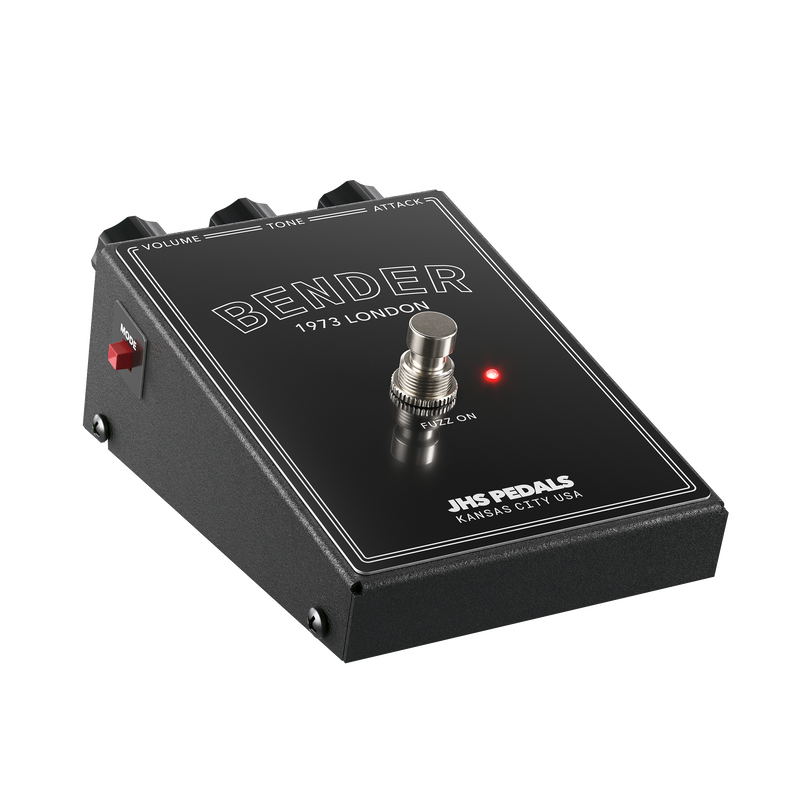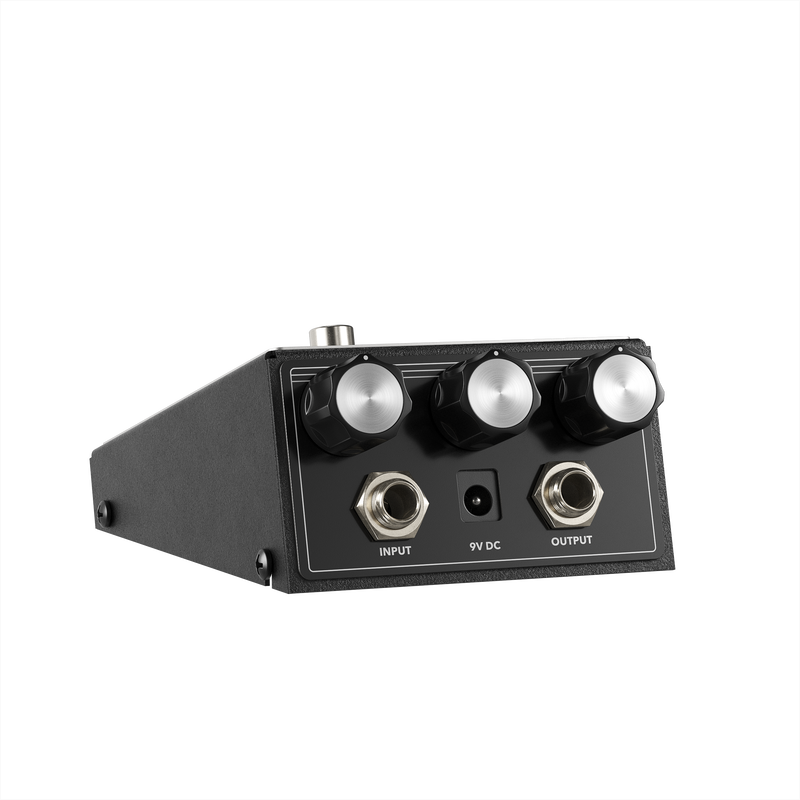

5.68 X 3.62 X 2.0 INCHES, 0.85 LB
The "Legends Of Fuzz" series is a collection of the most historic, rare and sought-after circuits in the world.
At JHS, fuzz pedals have been part of our range for over a decade. We've designed original circuits, reproduced classics, and seen the trend of fuzz popularity come and go. The "Legends Of Fuzz" series is our homage to the most important fuzz circuits ever created. This is our way of making sure the stories of these effects live on in the music you make. From the early days of fuzz in the London scene of the mid-60s to the ex-Soviet military factories of the 90s that brought the Big Muff back to life, fuzz tells a story, and that story includes guitarists like you. There's nothing more primitive than plugging your guitar into a fuzz circuit; it's raw, wild and so pure that it pushes the limits of what your instrument can accomplish. Tune into some fuzz and tune into sixty years of beautifully broken sound.
In April 1965, a new device changed rock 'n' roll forever. From the back of the workbench at Macari's Musical Exchange on Denmark Street in London, Gary Hurst invented the Sola Sound* Tonebender* fuzz. Building on the foundations of the American-made 1962 Maestro Fuzz Tone*, Gary expanded what fuzz could do and brought a new sound to the thriving London music scene. From its very first prototype made in a simple wooden box (April 1965) to the many other official versions of the Sola Sound* such as the MKI (September 1965), MK2 (mid 1966), MK3/MK4 (February 1970), etc., the Tonebender* has evolved as has the music he helped create.
The JHS Bender is our attempt to recreate the most prized Tonebender* in my collection: my 1973 MK3 Silver/Orange “Onomatopoeia” version. This version has three very special germanium transistors, tons of mojo, and over fifty years of experience, but it's finicky and doesn't always do what you want it to do. I had to ask: could we reproduce this pedal sonically? Could we capture what it is, but in a more consistent, reliable, and easy-to-manufacture way? Yes. The end result is a pedal that gives you the touch, feel and response of vintage germanium fuzz, but with the precision and consistency of carefully chosen modern silicon transistors.
The controls are Volume, Tone and Attack. The volume sets the overall output level of the effect; go up and things get louder. Tone allows you to sweep between light and dark tones so the Bender works well with a range of different amplifiers and guitars. Attack is the distortion control, the more you turn it clockwise the more fuzz you create. On the side, you'll see a "Mode" button that lets you access a never-before-heard "JHS Mode." Press this button for more gain and a boost in midrange to send your leads soaring through the mix. With higher attack settings in this mode, you will feel the fuzz slightly gated depending on the dynamics of your picking. If you want a fuzz that can go from middle-of-the-road crunch distortion to all-out aggression, the Bender is for you. The tone control is extremely flexible and allows for dozens of sound variations that most fuzz users only dream of.
If you like the fuzz sounds of Led Zeppelin, Jeff Beck, The Beatles, Mick Ronson (David Bowie) and My Bloody Valentine, then the Bender is for you.
USES CENTER NEGATIVE 9V DC. CONSUMPTION 4MA. DO NOT USE MORE THAN 9V DC, OR YOUR WARRANTY WILL BE VOID.
THE BENDER ALLOWS BATTERY OPERATION VIA A SINGLE 9V BATTERY. JUST LOOSEN THE TWO REAR SCREWS OF THE HOUSING AND THE BACK PLATE OPENS. INSIDE YOU WILL SEE A BATTERY CLIP TO INSTALL THE BATTERY.
CONTROLS
VOLUME - Controls the overall output volume. Left is less, right is more.
TONE - Controls the brightness of the sound. The left is darker, the right is lighter. ATTACK – Acts as a fuzz control. This is the same name as the original fuzz control. Left is less, right is more.
SWITCHES
MODE - This is our modification of the circuit. It engages a slightly higher volume sound with more mids.
Replica of the Toneebender MKIII*
JACKS
INPUT -If you look at the jacks above the pedal, the input is on the right. OUTPUT - If you look at the jacks above the pedal, the output is on the left.
POWER
Uses center negative 9V DC. Consumption 4mA. Do not use more than 9V DC, or your warranty will be voided.
The Bender allows battery operation via a single 9V battery. Simply loosen the two rear case screws and the back plate will open. Inside you will see a battery clip to install the battery into. Enjoy!


